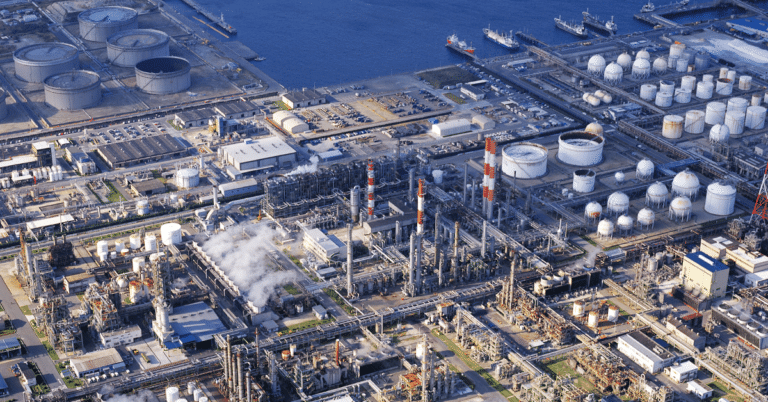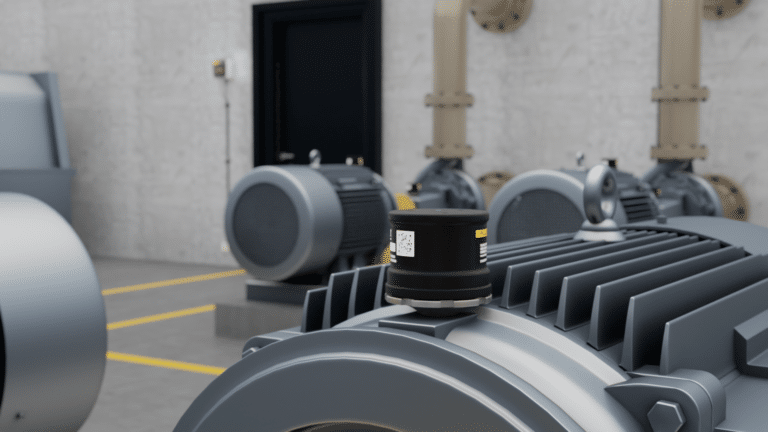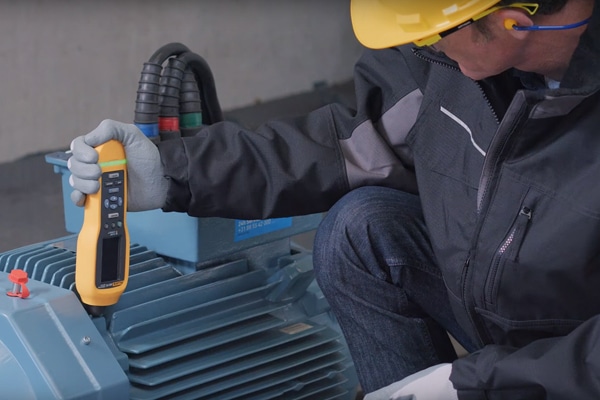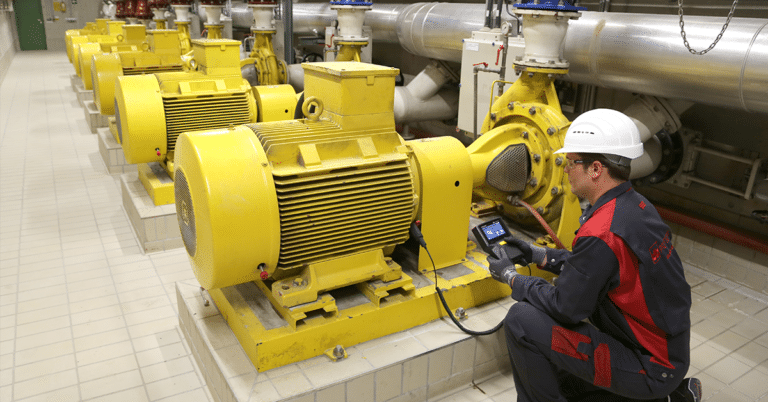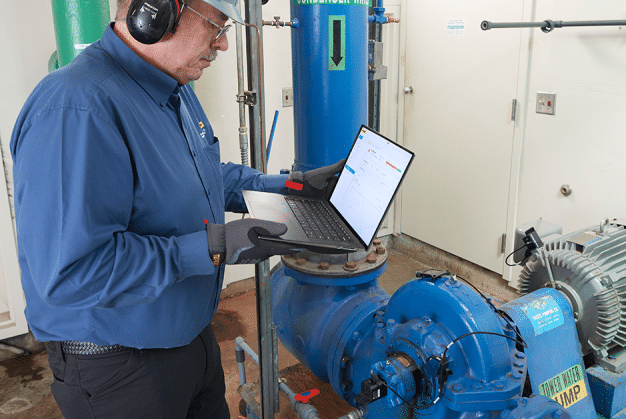
Machine health monitoring is a data-driven solution that optimizes asset performance throughout your plant. The approach uses Internet of Things (IoT) tools to build up a complete and detailed picture of asset health. This enables maintenance teams to correct faults quickly, ultimately preventing machine failure.
In this article, we’ll explain how machine health monitoring works and why it’s so important in a modern plant. We’ll also talk about how equipment health monitoring can support a predictive maintenance (PdM) strategy.
What is Machine Health Monitoring?
It’s helpful to think of machine health monitoring as running on two tracks: a baseline and a trending track.
Machine health monitoring uses thousands of data points to establish a baseline “normal” for each new asset. That involves running vibration analysis, thermographic analysis, power usage analysis, and tracking other key performance indicators during a machine’s normal operations.
Once the baseline is established, machine health monitoring measures your assets’ ongoing health by tracking data trends over time. Even minor anomalies, like shifts in temperature or vibration patterns, can point to a machine fault. Technicians can analyze data progressions to improve asset health management and keep your equipment operating at peak efficiency.
How Does Machine Health Monitoring Work?
Machine health monitoring leverages IoT in manufacturing tools to yield insights into equipment health.
Data collection is at the heart of machine health monitoring. The strategy brings together data from a wide range of sources, including:
- Vibration sensors
- Thermographic sensors
- Electrical meters
- Oil condition monitoring sensors
Sensors are important for machine health monitoring because they collect data continuously, giving technicians a full picture of asset health. Tools like vibration meters can give you a snapshot of asset health at a fixed point, but vibration sensors can provide more depth. Instead of looking at average vibration levels or peak readings, sensors give you access to full-time waveform and FFT data.
IoT sensors can also stream asset health data to the cloud to be stored and analyzed. Software solutions, like computerized maintenance management systems (CMMS), can organize machine health monitoring data.
Some CMMS systems, like eMaint, can even detect anomalies and generate work orders in response. Tools like Fluke Connect™ and Azima DLI can help teams get a deeper understanding of their asset health by analyzing data across different inputs and formats.
What are the Benefits of Machine Health Monitoring?
Machine health monitoring brings together asset data from a wide range of sources so that you can get a full picture of your plant’s maintenance needs. It’s like having a team of technicians constantly monitoring your plant’s operations.
Most plants today are facing labor shortages, especially as more and more experienced technicians hit retirement age. Machine health monitoring helps teams make the most of their limited resources. Its data-driven insights make a huge difference when it comes to setting maintenance priorities, forecasting, and scheduling.
Implementing machine health monitoring boosts productivity by increasing overall uptime. Instead of being stuck in reactive mode, teams can see problems coming and can plan for them. That means a sharp reduction in unplanned downtime. It also means a safer environment for your employees, and for your other equipment.
But machine health monitoring doesn’t just prevent asset failure. It helps optimize performance, so that you meet your production goals without any slow-downs or drops in quality.
It also frees up your maintenance crews from performing unnecessary schedule-based maintenance tasks. Instead of changing parts or performing inspections based on the calendar, your teams can focus their efforts where they’re most needed. Over time, this yields significant cost reductions.
Overall, the benefits of machine health monitoring include:
- Increased productivity
- Longer asset lifespans
- Reduced maintenance costs
- Reduced wear and tear on assets
- Increased uptime
- Greater safety throughout your plant
Machine Health Monitoring and Artificial Intelligence
Dealing with the vast quantities of data collected for machine health monitoring can be overwhelming. The average plant doesn’t have the time or expertise needed to sift through all that information.
That’s where artificial intelligence (AI)-enabled tools can make a difference. AI can quickly analyze huge data sets, taking your machine health monitoring program to the next level.
AI tools are great at spotting anomalies. The right software can alert your technicians whenever asset data changes from its baseline level.
Some AI tools, like Azima DLI, go beyond simple anomaly detection. Azima’s AI-powered diagnostic engine can diagnose 1200 different asset and component faults using machine health monitoring data. The tool also continues to learn and improve its diagnostic capabilities the longer it operates.
Machine Health Monitoring with Prüftechnik
Prüftechnik offers a complete machine health monitoring solution: Hardware for data collection, software for analytics, and human experts to consult and guide maintenance efforts.
Fluke Connect™ provides a central platform to store and analyze data from a wide range of sources so that teams can build a complete picture of the plant’s maintenance needs.
Our remote condition monitoring (RCM) services offer expert insights and guidance at every stage of the process – from implementation to day-to-day monitoring and analytics. Our global experts can train your staff, help set maintenance priorities, and diagnose machine faults, all using data streamed via the cloud.
No matter your needs, our tools and services can help you implement a successful machine health monitoring program. Ready to increase machine uptime, see greater productivity, and boost asset lifespans? Reach out to the experts at Prüftechnik to get started.

